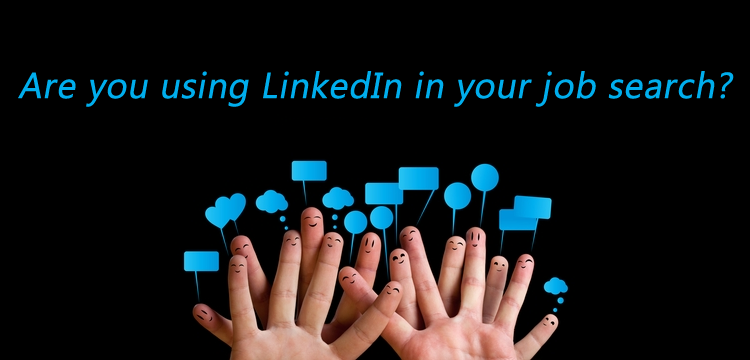
Make LinkedIn Work for You
LinkedIn is an integral part of today’s job search. If you need help making your profile shine, here are some things to keep in mind.
LinkedIn Profile Necessities
Summary
Once you know what keywords you want to highlight in your LinkedIn profile, you are ready to start building. A great place to start is your summary. A LinkedIn summary usually includes more personality than a resume summary, and is written in a casual, conversational manner.
There are a variety of different ways people organize their summary, and there isn’t one correct way to do it. If you get stuck when you’re creating your summary, here’s a good template to start with:
- In the opening paragraph, describe what you do and what experience level you’re at.
- In the next paragraph, describes a select few accomplishments that relate to the job you’re looking for. This is a good place to use keywords.
- In the third paragraph, describe your personal work style. Also, mention any important soft skills that might help you land a role.
- Lastly, include contact info and how you prefer to be contacted.
Keywords
It’s important to use keywords on your LinkedIn profile. They are the same type of keywords you put on your resume. On LinkedIn, job seekers use keywords to attract companies rather than to get past an Applicant Tracking System. This is important because there are many skills, programs, and certifications. The only way companies can keep track of them while looking for candidates is to search for keywords. Keywords fit well in the summary, headline, experience, and endorsements sections of a LinkedIn profile.
Endorsements
You can easily boost the amount of keywords on a page through the Skills and Endorsements section. The more you can get endorsed for a certain skill, the more that keyword will help in search results. This makes it easier for companies to find you if you have the skills they’re looking for.
Endorsements are extremely easy to get. Any first tier connection can choose a skill to endorse you for. This is good news for getting endorsements. However, it can also be bad news if you get endorsed for something that doesn’t represent your career goals. You should make sure your endorsements fit your job aspirations. Otherwise, it can be confusing for people visiting your page. These incorrect keywords can also attract the wrong recruiters and hiring managers, which would frustrate everyone involved.
In this case, you can click the “X” next to the endorsement you want to delete. This will remove that keyword from your list.
Certifications
If you start vocational training, it’s important that you document it on your LinkedIn profile as soon as you can. Once a certification class starts, you should document the certification under either the Courses or the Education section of your profile. You should also add your estimated completion date. This way, it’s clear to anyone visiting your page that you don’t actually have the certification yet.
It’s also a good idea to spell out the certification in addition to the acronym. For example, A CNA certification should be listed as “Certified Nursing Assistant”. This is so both terms will be caught in keyword searches.
After you get your certification, you can move this info to the section on your profile which is only meant for certifications you have already earned as opposed to certifications you’re working toward.
Complete Profile
Job seekers need to make sure that their profiles are “complete” according to LinkedIn. When LinkedIn deems a profile “complete,” it’s 40 times more likely to come up in search results than an incomplete profile. Because of this, having a complete profile is crucial to using LinkedIn to its fullest.
To complete your profile, you’ll need to do a few things:
- You need a picture. A LinkedIn profile will never be complete without one. The picture needs to be professional. It can be a very simple headshot while dressed in professional attire. It doesn’t have to be an expensive photo from a studio. The photo should also be relatively recent. If the photo you want to use is over five years old or so, it should be retaken. A hiring manager should be able to see the person in the picture and recognize them immediately when they walk in the door for an interview.
- You need at least 50 connections. Any less than that and your profile won’t be complete.
- You need 3 or more skills in the Skills and Endorsements section.
- You need to list 2 past positions in the Experience section (if possible).
Recommendations
Recommendations are important for any job seeker on LinkedIn. Companies are looking for people on LinkedIn, and a good recommendation can go a long way in building interest. A hiring manager who is interested in you might see someone else on LinkedIn with similar credentials. If the other person has 10 positive recommendations, and you have none, that could affect their choice.
Connections
Connections are important to getting noticed on LinkedIn. The more connections you have, the bigger your network is. Also, LinkedIn makes it very difficult for you to find people outside of your network.
Your network is made of your first, second, and third connections, plus any members of groups you’ve joined. Having a big network is important to getting found by companies and recruiters. You might have all the skills and experience that a company is looking for, and you also might be in the perfect location physically. However, if you don’t have a big enough network, the company won’t be able to find you on LinkedIn.
This article was contributed by Jeff Lareau and Nicole Maseberg with CompTIA.